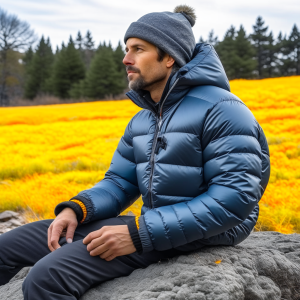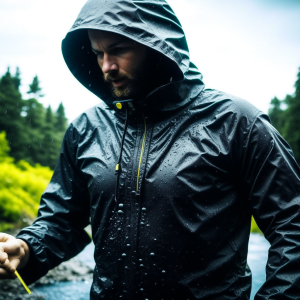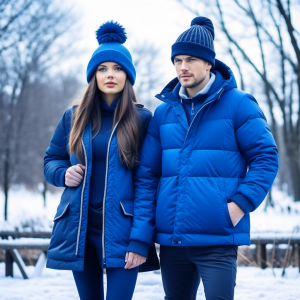Maximize Your Warmth and Style with Expert Cold Weather Layering Techniques
As the winter season envelops us in its chilly embrace, the necessity for both warmth and style takes center stage in our wardrobes. The drop in temperatures compels us to embrace the art of layering our clothing. Have you ever considered the intricate science behind effective layering methods? This article will explore the fundamentals of cold-weather clothing layering, uncovering the principles that distinguish superior garments in the fight against bone-chilling cold, ensuring that you remain both comfortable and fashionable throughout the harsh winter months.
Layering clothing transcends mere fashion; it represents a strategic approach to heat retention and comfort in extreme weather conditions. When temperatures plunge, our bodies instinctively respond by constricting blood vessels to conserve heat, often resulting in cold extremities. Unfortunately, this natural response alone is frequently inadequate. Therefore, the strategic application of layering becomes essential, enabling us to create an effective barrier against the cold while preserving our freedom of movement and overall comfort.

Create an Effective Base Layer: The Cornerstone of Your Winter Wardrobe
The base layer is the crucial foundation of your winter clothing ensemble, designed to fit snugly against your skin while delivering essential insulation. To fully appreciate the significance of this layer, we must delve into the science of moisture management and its profound influence on your warmth and comfort during the chilly months ahead. A well-constructed base layer plays a pivotal role in regulating your body temperature and keeping you dry.
Utilize Moisture-Wicking Fabrics for Optimal Comfort in Cold Conditions
Choosing the right material for your base layer is paramount for effective moisture management. The importance of moisture-wicking capabilities cannot be overstated. These specially designed fabrics actively draw moisture away from your skin—whether it’s sweat or external dampness—preventing it from accumulating and causing discomfort. A premium base layer not only acts as a moisture barrier but also ensures you stay dry and cozy, even in challenging weather conditions, significantly enhancing your overall warmth and comfort.
Understanding Insulation: Benefits of Merino Wool and Synthetic Fibers
Let’s examine how materials like merino wool and synthetic fibers enhance the insulating power of your base layer. Merino wool is renowned for its natural warmth and breathability, making it an exceptional choice—it provides insulation while adeptly wicking moisture away from the skin. On the other hand, synthetic materials such as polyester and nylon offer a fantastic balance between durability and insulation, creating a warm microclimate next to your skin that effectively retains body heat, ensuring you remain cozy even in the harshest environments.
Optimizing Fit: Essential Tips for Base Layer Performance
When selecting the fit for your base layer, it’s essential to go beyond your usual size; it’s about optimizing performance. A snug-fitting base layer maintains constant contact with your skin, thereby enhancing both its insulating and moisture-wicking abilities. However, achieving the right balance is critical—too tight can restrict movement and comfort, while too loose may hinder effectiveness. When determining fit, consider the activities you’ll be engaging in and your overall layering strategy to ensure seamless integration with your other cold-weather garments.
Ultimately, the base layer serves as more than just clothing; it acts as a sophisticated shield against the harsh winter climate, providing essential moisture-wicking and insulating properties. By understanding the unique attributes of materials like merino wool and synthetic fibers, alongside mastering the fit, you can transform your base layer into a fundamental element of your defense against the cold.
Utilize the Insulating Layer: Your Key to Efficient Heat Retention
 Moving on to the insulating layer, we highlight its vital function in trapping and maintaining heat around your body. This layer is crucial in the science of heat retention, serving as a protective barrier against harsh winter conditions. Let’s examine key aspects such as warmth-to-weight ratios, the benefits of down insulation, and the eco-friendly advantages of synthetic alternatives.
Moving on to the insulating layer, we highlight its vital function in trapping and maintaining heat around your body. This layer is crucial in the science of heat retention, serving as a protective barrier against harsh winter conditions. Let’s examine key aspects such as warmth-to-weight ratios, the benefits of down insulation, and the eco-friendly advantages of synthetic alternatives.
Warmth-to-Weight Ratios: Maximizing Efficiency in Insulation
Understanding warmth-to-weight ratios is essential when selecting an insulating layer. This principle emphasizes that insulation materials should deliver excellent warmth without excessive bulk. In essence, it’s about achieving maximum warmth while minimizing weight, ensuring you can move freely and comfortably. This balance is particularly vital for individuals who seek insulation without feeling encumbered, allowing for unrestricted activity in cold environments and enhancing overall mobility.
Down Insulation: Superior Warmth for Outdoor Adventurers
Down insulation is a premier choice for those seeking unparalleled warmth in an incredibly lightweight form. Sourced from the soft feathers of ducks and geese, down is celebrated for its exceptional warmth-to-weight ratio. Its lightweight and compressible nature makes it a favored option among winter enthusiasts who require effective insulation without compromising mobility. Understanding the advantages of down insulation is essential for recognizing its place in creating an insulating layer that harmonizes warmth, comfort, and flexibility.
Selecting Synthetic Insulation: Ethical Warmth for All Conditions
Synthetic insulation materials, primarily composed of polyester fibers, have emerged as popular ethical alternatives in the insulation landscape. What sets synthetic insulation apart is its ability to retain heat even in wet conditions, a feature where down may falter. This resilience in unpredictable weather makes synthetic fabrics ideal for various climates. Additionally, choosing synthetic options aligns with ethical considerations, allowing you to enjoy warmth without sacrificing your personal values.
Choosing the Right Thickness: Precision in Insulation Selection
Determining the appropriate thickness for your insulating layer requires careful thought; precision is crucial. Evaluate the anticipated level of cold exposure alongside your layering strategy when deciding on thickness. In milder climates, a thinner insulating layer may suffice, while harsher conditions may call for a thicker, more robust option. By understanding the nuances of insulation thickness, you can customize your insulating layer to meet the specific demands of your winter activities.
Ultimately, the insulating layer transcends the traditional role of clothing, evolving into a strategic ally in the battle against the cold. By unraveling the complexities of warmth-to-weight ratios, celebrating the benefits of down insulation alongside synthetic alternatives, and providing guidance on thickness selection, we can redefine the insulating layer as a calculated defense mechanism against winter’s icy grip.
Fortify Your Defense: The Outermost Layer Against Severe Winter Conditions
The outermost layer serves as your vital barrier against biting winds and frigid temperatures. This layer fulfills multiple roles: it not only shields you from environmental elements but also plays a crucial part in moisture control. By diving deeper into the outer layer, we will uncover the importance of breathability, the transformative advantages of DWR finishes and Gore-Tex membranes, and the essential windproof features that enhance overall insulation efficiency.
Breathability: A Key Component for Comfort and Moisture Management
Often underestimated, breathability is a critical attribute of the outer layer that significantly affects overall comfort. This quality refers to the fabric’s ability to allow sweat vapor to escape from your body while preventing external moisture from penetrating. Achieving this delicate equilibrium keeps you dry and comfortable, thereby alleviating the chilling effects of trapped moisture. A breathable outer layer is essential for maintaining a cozy microclimate within your clothing, ensuring exceptional comfort during inclement weather.
DWR Finishes and Gore-Tex: Leading the Charge in Waterproofing Technology
 DWR (Durable Water Repellent) treatments and Gore-Tex membranes stand at the forefront of cold-weather outerwear technology. DWR finishes give fabrics water-repellent properties, establishing a robust barrier against rain, sleet, and snow. Gore-Tex and similar innovations elevate waterproofing capabilities by delivering an optimal blend of impermeability and breathability. Grasping the synergy between these technologies is vital for remaining dry and comfortable, even in extreme weather conditions.
DWR (Durable Water Repellent) treatments and Gore-Tex membranes stand at the forefront of cold-weather outerwear technology. DWR finishes give fabrics water-repellent properties, establishing a robust barrier against rain, sleet, and snow. Gore-Tex and similar innovations elevate waterproofing capabilities by delivering an optimal blend of impermeability and breathability. Grasping the synergy between these technologies is vital for remaining dry and comfortable, even in extreme weather conditions.
Windproof Features: Strengthening Your Shield Against Chilling Winds
Windproof characteristics are indispensable in frigid weather, especially when biting gusts can penetrate even the sturdiest materials. The windproof outer layer acts as an impenetrable barrier against cold air, enhancing comfort while protecting the insulation of the inner layers. By blocking cold winds, your outer layer becomes a formidable shield, ensuring that your carefully chosen layers work in unison to keep you warm and safeguarded from harsh environmental conditions.
In summary, the outermost layer is more than just a protective shell; it serves as an advanced barrier that expertly balances breathability and waterproofing. By understanding the significance of breathability, exploring the innovations of DWR finishes and Gore-Tex membranes, and recognizing the essential windproof features, we can elevate the outer layer into a versatile garment that excels in style, functionality, and resistance to the elements.
Effective Strategies to Combine Maximum Warmth and Style This Winter
With a comprehensive understanding of effective layering firmly established, let’s delve into actionable tips and strategies designed to enhance your cold-weather experience, seamlessly merging warmth with enduring style. Accessories play a pivotal role in winter attire, frequently acting as unsung heroes that can enhance your wardrobe. From the indispensable warmth provided by well-chosen gloves to the stylish touch of a cozy hat, and the comfort of thermal socks, these seemingly minor details are crucial in achieving a fashionable and comfortable winter ensemble.
The Essential Role of Accessories: More Than Just Aesthetic Enhancements
Accessories are far more than mere embellishments; they are critical components of your defense against the cold. Beyond their visual appeal, items such as gloves, hats, and thermal socks serve critical functions in enhancing your overall warmth. By thoughtfully integrating these accessories, you can ensure that every part of your body is shielded from the chill, effectively preventing valuable body heat from escaping into the frigid air.
Invest in Quality Accessories: Recommendations for Unmatched Comfort
The quest for warmth extends beyond your base and insulating layers; it also encompasses the careful selection of accessories. Invest in high-quality gloves crafted from insulating materials like fleece or lined leather to create a formidable barrier against the cold. A warm hat with extra insulation or a cozy faux-fur lining not only enhances your style but also aids in retaining body heat. Opt for thermal socks made from merino wool or advanced synthetic blends to ensure maximum warmth and effective moisture management, empowering you to brave the cold.
Fashion-Forward Tips: Merging Functionality with Style
Staying warm in freezing temperatures doesn’t have to compromise your sense of style. Utilize these savvy styling techniques to navigate the winter landscape with grace. Experiment with layering various textures in your outfit to create visual interest while simultaneously enhancing insulation. Choose winter-appropriate colors that harmonize with the snowy backdrop, and don’t hesitate to accessorize with bold pieces like a vibrant scarf or chic earmuffs to elevate your overall appearance.
Ultimately, accessories are the understated architects of a well-rounded winter wardrobe. They not only enhance warmth but also allow you to express your unique style even in the coldest conditions. By selecting high-quality accessories and infusing your winter attire with thoughtful styling, you can master the chill while showcasing undeniable elegance.
Embrace the Harmonious Blend of Style and Functionality in Your Winter Wardrobe
As we conclude our exploration of conquering the cold, it’s vital to acknowledge the significance of style in winter clothing. Dressing for the cold doesn’t require sacrificing your fashion sensibilities; instead, today’s fashion landscape celebrates the seamless integration of functionality and flair. Numerous outdoor and fashion brands have recognized and embraced the demand for winter gear that not only keeps you warm but also exudes confidence and contemporary elegance.
The Evolution of Cold-Weather Clothing: A Stylish Renaissance
 The cold-weather clothing industry is experiencing a renaissance, where winter gear transcends basic functionality to become a symbol of innovation and style. Designers and brands are increasingly realizing the necessity for clothing that effortlessly merges practicality with aesthetic appeal. This transformation has ushered in a new era of outerwear that not only provides warmth but also captivates with its visual allure, appealing to those who refuse to compromise on style.
The cold-weather clothing industry is experiencing a renaissance, where winter gear transcends basic functionality to become a symbol of innovation and style. Designers and brands are increasingly realizing the necessity for clothing that effortlessly merges practicality with aesthetic appeal. This transformation has ushered in a new era of outerwear that not only provides warmth but also captivates with its visual allure, appealing to those who refuse to compromise on style.
Leading Brands: The Intersection of Style and Functionality
Several brands are spearheading this style revolution, skillfully blending fashion with practicality in their winter apparel. Canada Goose is celebrated for its luxurious down coats that deliver remarkable warmth without sacrificing style. The North Face incorporates cutting-edge technology into its designs, producing outerwear that balances chic aesthetics with practical functionality. Meanwhile, Moncler has redefined the puffer jacket, transforming it into a high-fashion statement piece, demonstrating that winter clothing can be both practical and runway-ready.
Smart Styling: Elevate Your Winter Fashion Game
Now, let’s explore how to effectively merge warmth and style in your winter outfits. Opt for standout pieces that fulfill both functional and aesthetic roles, such as a beautifully tailored wool coat or a sleek parka that serves as the centerpiece of your ensemble. Experiment with layering a chunky knit sweater over a fitted jacket for a cozy yet stylish look. Don’t shy away from introducing vibrant colors into your winter attire by accessorizing with eye-catching scarves or trendy boots.
Ultimately, embracing style during the cold is no longer a contradiction; it’s a vibrant reality shaped by a dynamic fashion industry. As stylish cold-weather gear emerges, adorned by innovative brands, the narrative shifts from mere survival to personal expression. So, immerse yourself in this style renaissance, select pieces that empower you, and redefine fashion amid the wintry embrace of the season.
The post Cold Weather Clothing Layers: The Science Explained appeared first on Survival Bite.
The Article Cold Weather Clothing Layers Explained: Understanding the Science Was Found On https://limitsofstrategy.com


Your exploration of cold-weather layering techniques resonates deeply, especially considering the challenges winter presents to both style and comfort. I’ve often found that the right base layer can make all the difference; for instance, merino wool not only keeps me warm but also manages moisture exceptionally well. This is crucial, as damp clothing can lead to a rapid drop in body temperature.
You make a great point about the importance of a solid base layer. Merino wool has really changed the game for winter wear, hasn’t it? I appreciate how its moisture-wicking properties help manage comfort, especially during those unexpected temperature fluctuations.
You make a great point about the importance of a solid base layer. Merino wool has really changed the game for winter wear, hasn’t it? I’ve been a fan for a while now and appreciate how versatile it is—not just for outdoor activities but also for everyday wear. I’ve worn it while hiking and even during long days at the office when the temperature seems to fluctuate wildly.
You raise a great point about Merino wool. I’ve found it to be a game changer myself, especially during those long hikes or chilly days when you’re not quite sure how warm you’ll get. The way it manages moisture really helps in staying dry without feeling restricted.
Layering really is an art, isn’t it? I’ve found that mastering this technique not only keeps me cozy but also adds a fun element to getting dressed each day in the winter months. I especially love starting with a moisture-wicking base layer. It’s amazing how those breathable fabrics can keep you warm while also preventing that clammy feeling when you’re bundled up.
It’s fascinating to think about layering not just as a fashion choice, but as a significant strategy for comfort and warmth during those frigid months. I’ve often found that the right layers not only keep me toasty but also allow for versatility—like when transitioning from outdoors to indoors. I love how fabrics can play a huge role in this; I typically go for merino wool as a base layer since it’s breathable and manages moisture so well.
I completely agree with you—layering is such a smart approach to dressing for the colder months. It’s interesting how it blends practicality with a chance for personal expression. I also love merino wool for its versatility; it feels so luxurious against the skin, doesn’t it? Plus, it’s great to know that while we’re keeping warm, we’re also making a sustainable choice—merino can be a more eco-friendly fabric option compared to some synthetics.
Ah, the fine art of layering—akin to a delicious lasagna, really. You’ve got your base (the pasta), your warm insulation (the cheese), and that outer layer that keeps everything together (the sauce). Just throw in a sprinkle of Parmesan (or a cozy scarf, in our case), and you’ve got yourself a recipe not just for warmth but for a fashion-forward winter look.
I love the analogy you’ve drawn between layering and lasagna—it’s such a relatable way to think about fashion in the colder months. Each layer does play a specific role, just like in cooking, and it’s fascinating how the right combination can make us feel both warm and stylish.